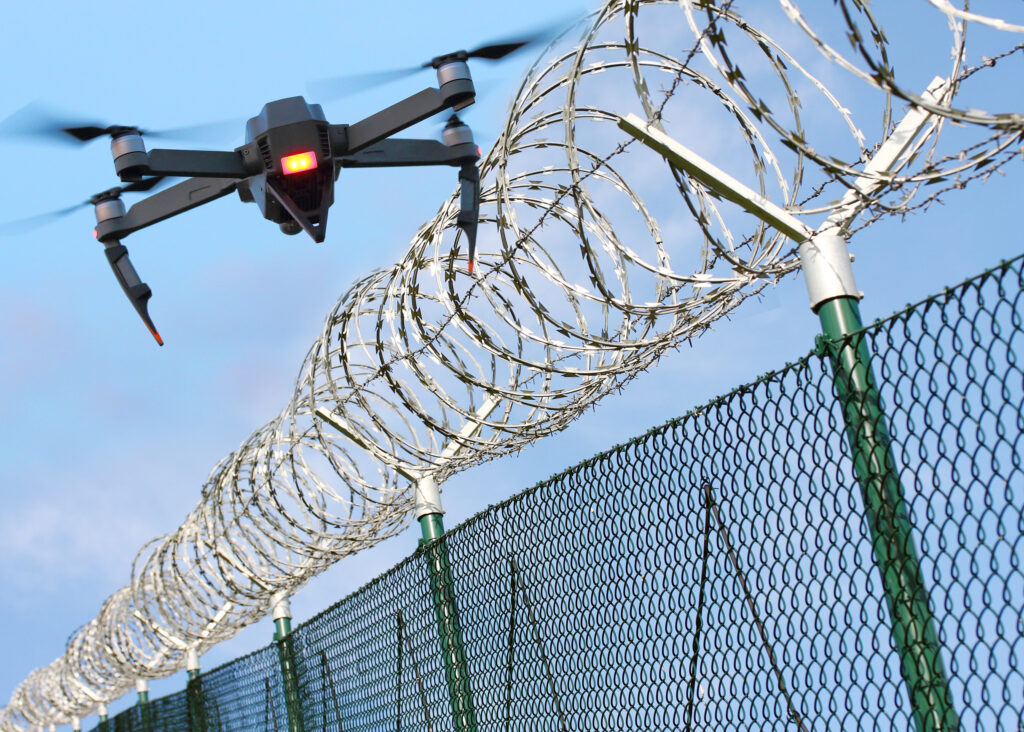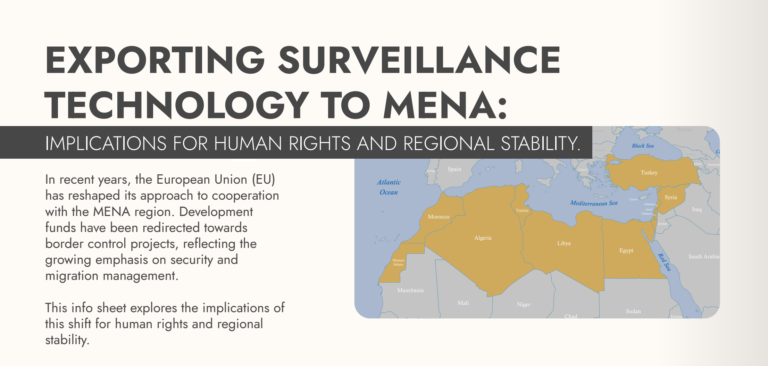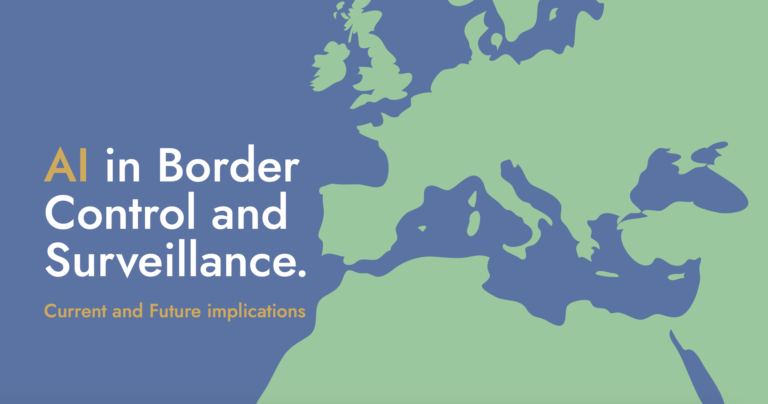The ethical cost of Artificial Intelligence tools has triggered heated debates in the last few months. From chatbots to image generation software, advocates and detractors have been debating the technological pros and societal cons of the new technology.
In two new reports, Europe’s Techno-Borders and Artificial Intelligence: The New Frontier of the EU’s Border Externalisation Strategy, EuroMed Rights, Statewatch and independent researcher Antonella Napolitano have investigated the human and financial costs of AI in migration. The reports show how the deployment of AI to manage migration flows actively contribute to the instability of the Middle East and North African region as well as discriminatory border procedures, threatening the right to asylum, the right to leave one’s country, the principle of non-refoulement as well as the rights to privacy and liberty.
European borders and neighbouring countries have been the stage of decades-long efforts to militarise and securitise the control of migration. Huge sums of public money have been invested to deploy security and defence tools and equipment to curb arrivals towards the EU territory, both via externalisation policies in countries in the Middle East and North Africa and at the EU’s borders themselves. In this strategy of “muscling-up” the borders, technology has played a crucial role.
EuroMed Rights’ new reports highlight how over the decades, surveillance technology has become a central asset in the EU’s migration policies with serious impacts on fundamental rights and privacy. In Artificial Intelligence: The New Frontier of the EU’s Border Externalisation Strategy we analyse how surveillance technology has been a crucial part of the European policy of externalisation of migration control. When surveillance technologies are deployed with the purpose of anti-smuggling, trafficking or counterterrorism in countries where democracies are fragile or there are authoritarian governments, they can easily end up being used for the repression of civic space and freedom of expression. What is being sold as tools to curb migrant flows, could actually be used to reinforce the security apparatus of repressive governments and fuel instability in the region.
At the same time, Europe’s Techno-Borders highlights how this security obsession has been applied to the EU’s borders for decades, equipping them with ever-more advanced technologies. This architecture for border surveillance has been continuously expanding in an attempt to detect, deter and repel refugees and migrants. For those who manage to enter, they are biometrically registered and screened against large-scale databases, raising serious concerns on privacy violations, data protection breaches and questions of proportionality.
Decades of “muscling-up” the EU’s borders keep showing the same thing: military, security, defence tools or technology do not stop migration, they only make it more dangerous and lethal. Nonetheless, the security and surveillance apparatus is only expected to increase: more and more money is being invested to research and develop new tech tools to curb migration, including through Artificial Intelligence.
In a context that is resistant to public scrutiny and accountability, and where the private military and security sector has a vested interest in expanding the surveillance architecture, it is crucial to keep monitoring and denouncing the use of these technologies, in the struggle for a humane migration policy that puts the right of people on the move at the centre!
Read our reports and their accompanying factsheets here:



